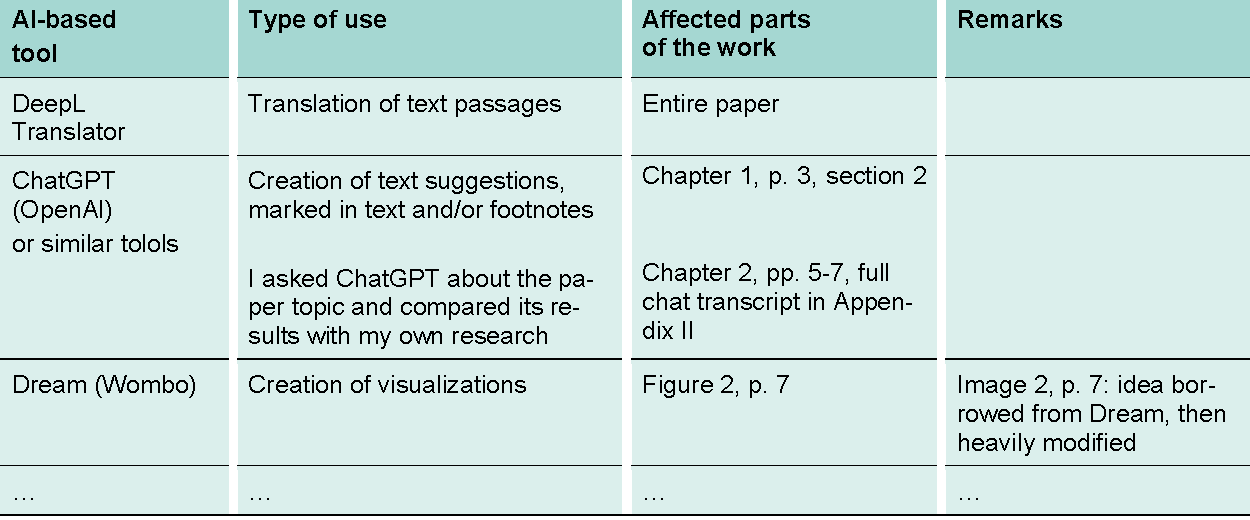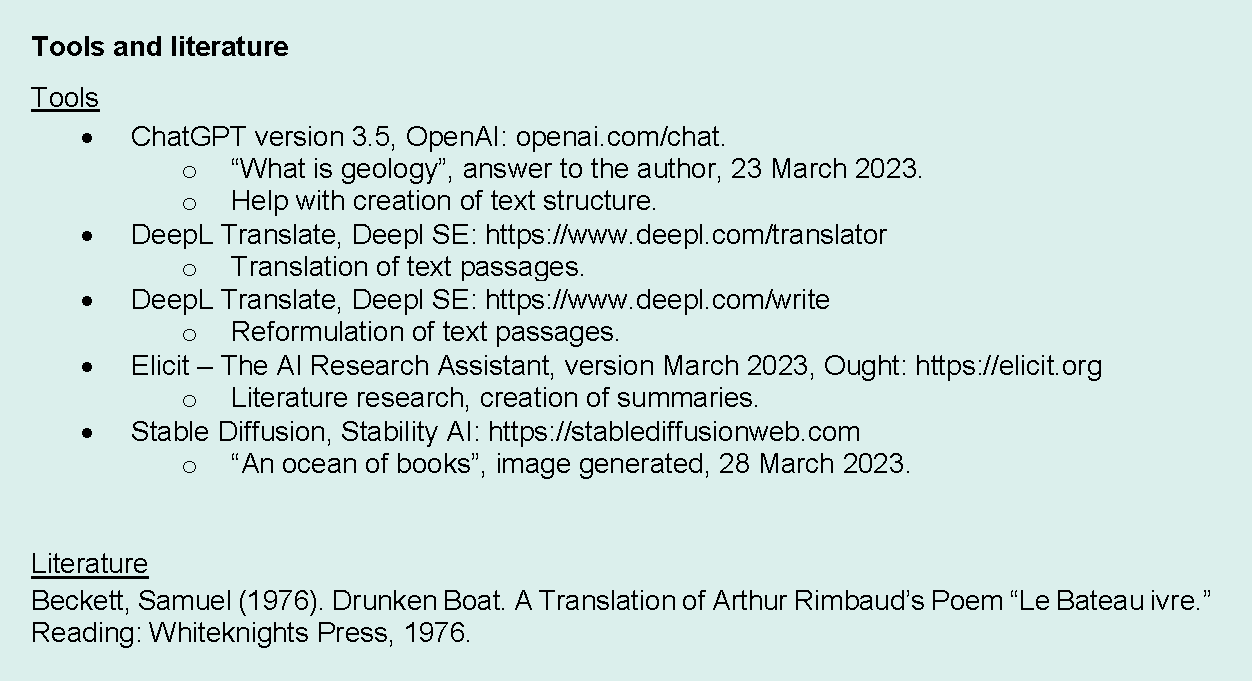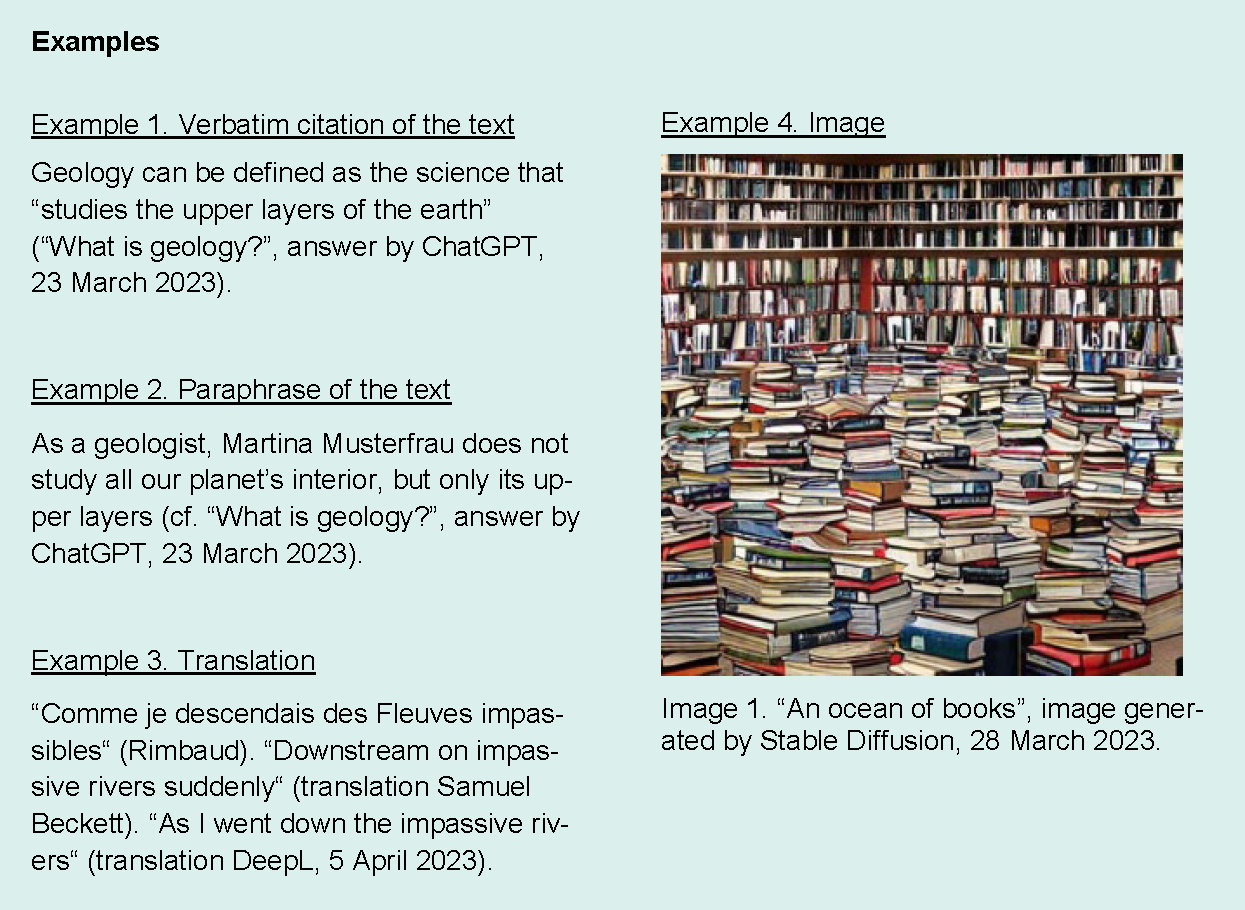Generative AI in Studies
Information for Students
On this page, we have compiled important information and materials for students on the topic of generative AI. You will find guidelines on the rules that apply at HWR Berlin for the use of generative AI tools in studies and examinations. Additionally, you will find links to self-learning materials.
Back to the AI page of HWR Berlin
Comprehensive information on the topic of generative AI at HWR and about HAWKI can be found on the AI page of HWR Berlin.
0 Comments
Start HAWKI
FAQ for Students
What rules apply at HWR Berlin?
- The HWR Berlin promotes the reflective use of AI in studies and teaching. The AI Guidelines of HWR (8/2025, in German) provide an overview of key legal and security-related aspects and set out the requirements for the use of AI for all members of HWR Berlin.
- Please follow the requirements set by instructors, examiners, and the faculty regarding the use and disclosure of AI.
- If you use generative AI tools in academic work or assessments, their use must be thoroughly documented.
- The IT service HAWKI offers protection-compliant access to Open AI GPT-4o that can be used for studies and teaching.
- Compliance with data protection and copyright is important – see ee the data protection page for HAWKI and the information sheet on the use of generative AI and data protection (3/24) (in German).
Addional Rules
Department of Business and Economics (FB1):
- For term papers and final theses as well as other types of unsupervised examinations, the AI regulation of FB1 applies.
- The declaration of authorship and further information can be found in the Moodle rooms of the study/master’s offices (in particular in FB1 FAQ Studium and Masterinformation: all you need to know in the section ‘Academic work and AI’).
Which AI tools can I use as part of my studies, and what should I keep in mind?
Students can use the HAWKI service as part of their studies. It offers data protection-compliant access to Open AI GPT-4o with your HWR user account.
If you wish to use other AI tools, keep in mind that you may be “paying with your own data.”
What you should consider additionally:
- Confidential information should not be shared.
- Information under copyrights should not be entered into generative AI.
- Texts generated with generative AI tools may contain incorrect data or references and should therefore be carefully reviewed. Use generated texts as inspiration and food for thought, but do not adopt them 1:1. AI tools are generally not based on scientific foundations.
- In student work (essays, theses), you may only use generative AI if it has been approved as a tool. Please ensure to document and reference its use thoroughly. document and reference thoroughly.
AI Tools in university context:
How can I find out if software contains AI functionalities?
Many software products and online services now contain hidden AI functionalities. Even Word has integrated AI into its spelling and grammar check.
If you are unsure whether you need to mention a software or service you are using as generative AI in a graded submission (e.g., term paper or thesis), please consult your examiner.
Can I use generative AI tools in student work (term papers/theses)?
You may only use AI tools in exam-related tasks, such as student work (term papers or theses), if they have been approved as tools by the instructor/examiner. Be sure to thoroughly document and reference their use.
Do I have to use generative AI tools in student work (term papers/theses)?
The use of generative AI tools is only mandatory if it is explicitly defined in the assignment and HAWKI (the university’s AI service) is to be used as the generative AI tool.
What is a whitelist (in relation of generative AI)?
A whitelist is a list of tools that students can use without having to explicitly reference their use. These tools may also include AI functionalities. At HWR Berlin, there is no university-wide list. Please clarify with your lecturer or supervisor (for theses) which AI tools are allowed and how they should be referenced.
An example of a whitelist with tools that contain AI functionalities:
- Word spelling/grammar checker
- DeepL Translator (not DeepL Write)
- Duden Mentor
How do other students use generative AI tools in their studies?
- Student perspective on AI applications and ChatGPT
- Generative AI for Data Analysis in R-Studio (in German)
- Video on AI with students and the teaching staff at HWR Berlin: University and AI – What concerns us right now? (in German)
“It is incredibly helpful for learning! Text-based tools can present connections in a different and simplified way…” (Feedback from the 23/24 student survey on AI)
“I found it helpful for programming, but also for creating initial outlines. This made it easier for me to organize my thoughts on a topic…” (Feedback from the 23/24 student survey on AI)
I want to learn more about generative AI. Where can I do that?
As part of studies at HWR Berlin, some instructors are already integrating the topic of generative AI into individual courses, depending on the subject.
In addition, we are planning to offer workshops for students as part of the Studium Generale, such as a workshop on “Writing with AI.” You will find information on future events on this page.
Correctly Referencing AI Tools
Please consider the following aspects to thoroughly document your use of AI and correctly reference it:
Describe AI usage in the Declaration of Authorship.
If generative AI tools are allowed in your student work (e.g., term papers or theses) and you use them, the Declaration of Authorship must state the use of AI tools.
An example:
“I used generative AI applications for information gathering and/or for revising my text. The results obtained using AI applications have been independently verified and adopted by me. Text sections created or modified using generative AI applications have been appropriately marked.”
You can find this and other variations in the document “Suggested Phrasing for Declarations of Independence” (3/24)(in German).
Declarations of independence can also be adapted based on learning objectives. Please consult your supervisor.
AI Regulation FB1: For term papers and theses fo FB1 the following Declation of Authorship* (DE/ENG version) has to be used.
*applies from SoSe25 as well as for final thesis, that are registred on or after February 15.
a) Create an AI directory
There are different possiblities to document generative AI in student work. The AI directory is one possibility: Additionally to a bibliography/list of references, an AI directory should be attached at the end of the student work, listing the tools or aids used to make the AI assistance transparent. You can choose from the following two options, for example:
1. Specification of AI tools in table form.

2. Specification of AI tools in a text-based directory

Save your chat history (questions/inputs/prompts and responses) outside of the AI application in order to fully reference it. Your supervisor may also require you to include the chat history as an appendix in your work.
Please consult with your supervisor.
For students of Department 1, the AI regulation of FB1 applies. AI Tools are documented as aids (AI directory, proof of prompts and labelling in the text, e.g. by footnote).
b) Citing
There are several possibilities to document generative AI tools. Examples can be found in the document “Suggested Phrasing for Declarations of Independence” (3/24), Section III, Points 3, 4, and 5. (in German). In the following the you will find examples to cite AI as a source.
- Generated content within the text/document

- Citation suggestions for approved tools according to APA style:
The APA suggestion for citing AI tools is based on the software reference format according to Section 10.10 of the Publication Manual (APA, 2020).
“OpenAI. (2023). ChatGPT (Jul 1 version) [Large language model]. https://chat.openai.com/chat.” - Citing ChatGPT prompt input and response according to APA style:
- Prompt input: “Is the distinction between the left and right brain hemisphere real or a metaphor?” (McAdoo, n.d.).
- ChatGPT response: “While the two brain hemispheres are somewhat specialized, the idea that people can be characterized as ‘left-brained’ or ‘right-brained’ is an oversimplification and a popular myth” (OpenAI, 2023).
- Reference: OpenAI. (2023). ChatGPT (Mar 14 version) [Large language model]. https://chat.openai.com/chat
Please note the copyright notices regarding AI-generated images/graphics from the ELZ blog post.
Consult with your supervisor regarding any other citation conventions that may apply.
Alternative citation styles: Harvard style, MLA style, IEEE style, Chicago style.
This section, as well as the document “Suggested Phrasing for Declarations of Independence” (3/24) (in German), is licensed under CC BY-SA 4.0 and is based on the guide “Aus KI zitieren“, Abschnitt „KI-Verzeichnis & Angabe von KI-Tools als Quellen/Hilfsmittel“ from the University of Basel, CC BY-SA 4.0.
If you use generative AI in your student work (e.g. term paper/thesis) without full labeling, this may be considered an attempt at fraud or deception.
Save your chat history for documentation purposes!
External Information and Learning Resources
KI-Campus
To access the offerings on the KI campus, registration is required.
For beginners, we recommend the following resources:

0 Comments